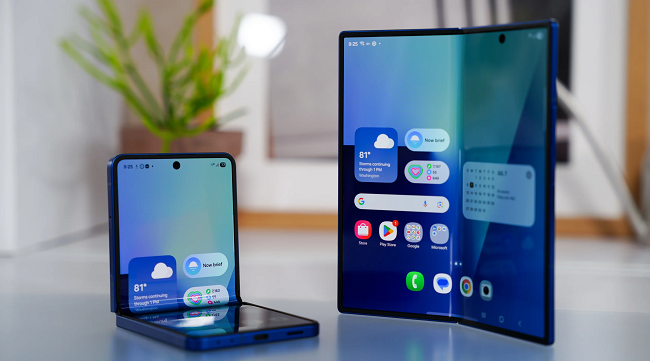Samsung on Wednesday unveiled the latest generation of its foldable smartphone, the Z Fold7, significantly slimmer than its predecessors in a bid to revitalise the niche market for foldable devices.
Over seven years have passed since Chinese firm Royole launched the world’s first flexible-screen phone, the FlexPai. Royole filed for bankruptcy in late 2024, and foldables still account for just around two percent of global smartphone sales, according to Ben Wood of CCS Insight.
Limited market adoption stems largely from issues such as bulkiness, subpar camera quality, and high cost.
Since launching the Galaxy Z Fold in 2019, Samsung has led the foldable segment but recently lost market share to Chinese rivals like Honor and OnePlus, and to US brand Motorola.
“Samsung, which had become somewhat conservative, has rediscovered its spark and delivered a product that stands out as best-in-class,” said Wood.
The new models — the £1,550 Galaxy Z Fold7 and £850 Galaxy Z Flip7 — are the thinnest and lightest in the range to date. When folded, they match the slimness of standard smartphones and are nearly half the thickness of Samsung’s earlier designs.
“This redesign marks a new era for Samsung’s foldables, offering a super-premium phone that unfolds into a tablet, complete with tailored software experiences,” said Avi Greengart from Techsponential.
“In the United States especially, nothing quite like this has been seen before,” he added.
Greengart also noted advancements in materials, which contribute to a sturdier and potentially longer-lasting device.
Foldable smartphones hinge open like a book and utilise OLED technology, replacing traditional glass screens with a flexible polymer plastic layer.
Not a ‘radical shift’
Samsung has enhanced the integrated camera’s performance, now offering a 200-megapixel wide-angle lens — four times the resolution of the Z Fold6 — placing it on par with the highest-end smartphones available.
The South Korean tech giant has also used this new product launch to incorporate more generative artificial intelligence features.
Powered primarily by Google’s Android operating system and the Gemini suite of AI tools, these features allow users to interact with their cameras in novel ways. For example, they can ask Gemini for fashion tips based on clothing photos or get bike repair suggestions.
“This isn’t a radical overhaul with a completely new multimodal interface that transforms the user experience,” cautioned Forrester analyst Thomas Husson.
Whether these AI innovations will help revive smartphone sales — which have declined as consumers delay costly upgrades — remains uncertain.



